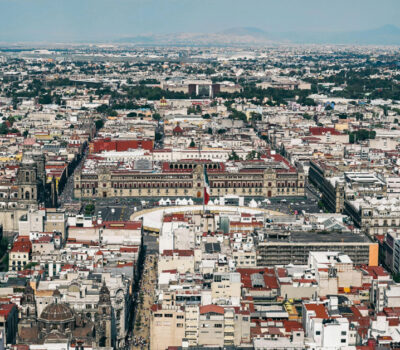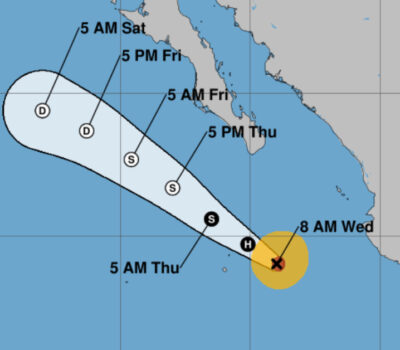Standing in front of the assembly line in Volkswagen’s massive campus in Puebla, Mexico, 35-year-old line boss Milton Araujo, looked at the shiny new Volkswagen Beetles rolling off the conveyer belt, illuminated by the bright lights overhead. “Back in the day, everybody had a Beetle,” he told Fox News Latino. “Now the car is different, much more modern.”
So is Puebla, which has emerged as one of the main hubs of Mexico’s automotive sector. “There are more stores, shopping centers,” Araujo said.
VW’s facility is a modern metropolis unto itself, covering more than 1.1 square miles, employing nearly 16,000 people and producing more than 500,000 vehicles a year.
It’s the largest car factory in North America and a big part of the reason why in 2013 the company celebrated the production of its ten millionth car made in Mexico.
Beyond Volkswagen and Puebla, the automotive industry is also growing throughout the country, in places like Aguascalientes, where Nissan opened a $2 billion facility late last year.
The latest evidence of this came in early July, when BMW announced plans to build a $1 billion assembly plant, most likely in the central state of San Luis Potosí.
In the last decade, Mexico has emerged as the world’s fourth-largest automobile exporter, behind only Germany, Japan and Korea, and earlier this year the country eclipsed Japan as the biggest exporter of cars to the world’s largest market, the United States.
“Investors see Mexico as an export platform with access to the United States,” Eric Farnsworth, the Vice President at the Council of the Americas in Washington D.C. told FNL.
Auto manufacturers from around the world are drawn to the country because of its proximity to the U.S. as well as cheap labor. Workers are paid about one-sixth what their counterparts in the U.S. make.
Chrysler builds Hemi engines and Ram pickups in Saltillo, the capital of the Mexican border state of Coahuila. General Motors builds Silverado trucks in the state of Guanajuato, northwest of Mexico City.
Although Chrysler still builds its highly profitable Jeep Grand Cherokee in Detroit, both Ford and General Motors have shuttered facilities in the Motor City.
Today Detroit is bankrupt, known nearly as much for its urban decay and abandoned factories and 14.5 percent unemployment rate—a figure more than double the national average—as it once was for manufacturing the cars.
The simplest logic suggests that there is a zero-sum calculation that any new auto plant in Mexico means one less plant in the U.S. and that every job created means one fewer job in the U.S.
Advocates of cross-border, regional economic development as exemplified by the North American Free Trade Agreement (NAFTA), however, argue that U.S. companies working in tandem with partners in Mexico can out-compete manufacturers in Asia and help build up the industry on both sides of the Rio Grande.
“Mexico isn’t taking jobs from the U.S.,” Eric Farnsworth told FNL, “Because of integrated supply chains, up to 40 percent of the content of the products Mexico exports comes from the U.S.”
NAFTA has helped create more than six million jobs in the U.S., its defenders claim, but it’s a notion that is frequently disputed.
What is clear is that, since NAFTA came into force in 1994, foreign direct investment (FDI) in North America has increased nearly sixfold from $110 billion per year in 1992 to $650 billion per year in 2010, and today more than $1 billion dollars of goods and services cross the U.S.-Mexico border every day.
“A prosperous Mexico is good for the U.S.,” Farnsworth added, echoing the sentiment expressed by Mexican President Enrique Peña Nieto last year in an editorial in the Dallas Morning News. The U.S., Peña Nieto observed, “sells more of its exports to Mexico than it does to Brazil, Russia, India and China combined. By increasing economic growth in Mexico, we create jobs in the U.S.”
“The North American automobile industry is one of the most compelling cases of economic integration in the world,” Tony Payan, director of the Mexico Center at the Baker Institute for Public Policy at Rice University, told FNL. “It’s a success story, but at the same time it’s a darker story about Mexico betting on low wages” to drive development.
Eight out of every ten vehicles produced in Mexico are shipped out of the country.
“Overall Mexico is seen as a good point of distribution for both North America and South America. But [in terms of sales] it’s not a high volume country,” Paul Lacy, a director of the automotive division at the consulting firm IHS, told FNL.
Mexico may be home to 16 billionaires, but more than 11 million of the country’s 120 and some million people live in extreme poverty. In 2013 the country’s economy expanded by only 1.1 percent, and growth in 2014 isn’t expected to top 3 percent.
Nearly half of Mexico’s labor force works in the informal economy—low skill jobs that include window washers, taco stand operators and domestic help. Even if they earn enough to afford monthly payments for a car, informal sector workers often struggle to get bank loans. For this reason, Payan explained, “The cars you see in Mexico tend to be older. Families keep their cars longer.”
The Chevy Aveo is the top selling car in Mexico. But, Mexico’s automobile sales are not exactly a cause of celebration for U.S. carmakers.
In 2013 Mexico reported 1,063,363 new car sales, the first time since the beginning of the global recession in 2008 that that number topped a million.
By contrast, consumers in the U.S. purchased 15.6 million vehicles in 2013.
To put this in perspective, in 2013, Fiat, the automaker that owns Chrysler and Jeep, reported 85,000 vehicle sales in Mexico—about three-quarters the amount the company sold in Argentina.
Fiat sold nearly 1.9 million cars in the U.S. and 785,000 in Brazil.
“Cheap labor has been the Mexican strategy for the last forty years, and clearly workers cannot afford the cars [they make],” Payan said. “There’s a tension in Mexico that’s unsustainable. Mexico bills itself as a middle-class country but relies on low wages. You cannot be both a middle class country and a low-income country. Middle class implies consumption.”
Not everybody sees the glass half-empty, though. “You still have a relatively small middle class, but that’s going to grow,” Farnsworth said.
“Companies no longer look at Mexico as an assembly country, a maquiladora. Mexico has educated a tremendous number of engineers and now design work and engineering takes place on both sides of the border,” he added.
After 20 years of focusing on encouraging people to get engineering degrees, Mexico now has more engineers than Germany, Brazil or Spain.
These graduates may have a bright future if Mexico’s industrial sector continues to expand.
Looking towards the future, analysts see labor costs rising in other parts of the globe, like China, something that is very likely to benefit America’s southern neighbor.
According to automotive analyst Paul Lacy, “Mexico’s manufacturing continues to grow, and that will create economic growth.”
And, he added, “We’re better off working with Mexico than we are without Mexico.”
Nathan Parish Flannery is a freelance reporter based out of Mexico City who has worked on projects in Mexico, Colombia, Bolivia, India, China and Chile. Follow him on Twitter: @LatAmLENS.
Standing in front of the assembly line in Volkswagen’s massive campus in Puebla, Mexico, 35-year-old line boss Milton Araujo, looked at the . . .











